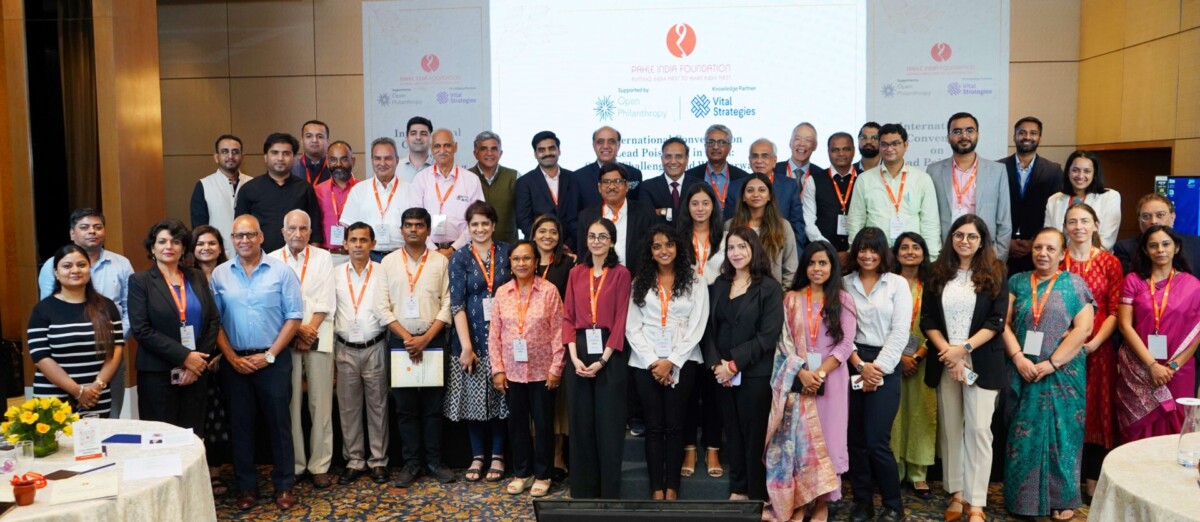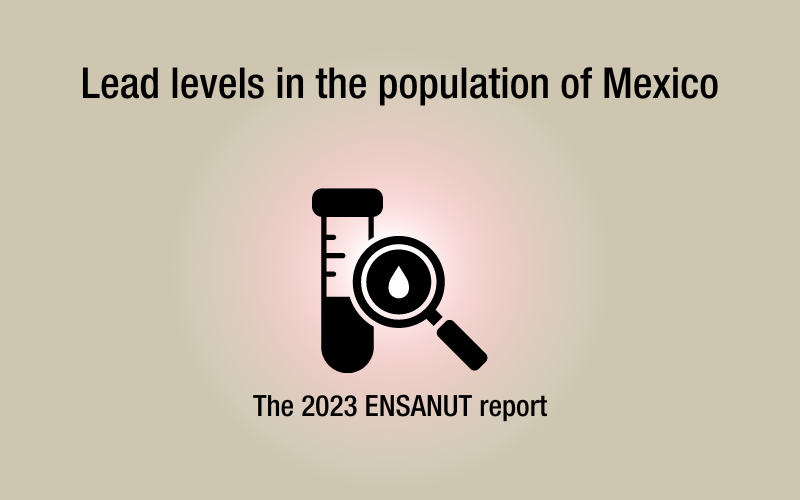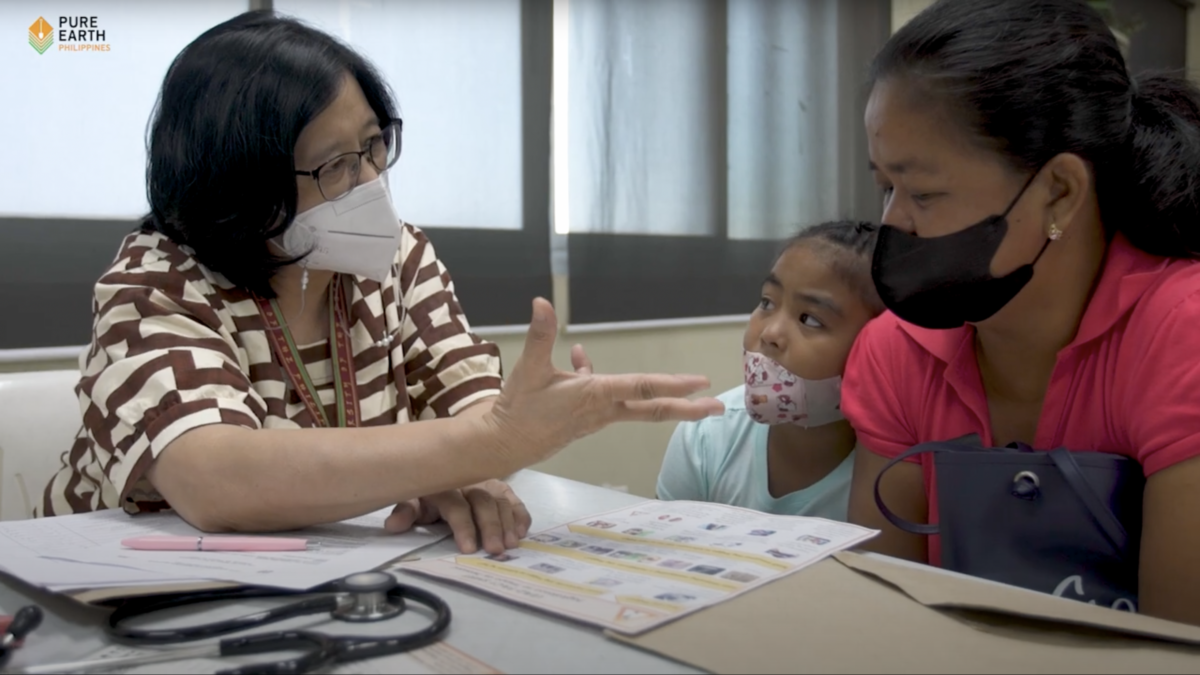FOR IMMEDIATE RELEASE:
New research shows nearly half the children in Mexico impacted by lead poisoning, at risk for Mild Mental Retardation and other serious health impacts; lead exposure from pottery is the principal cause.
New York, NY – December 11, 2014 – In November 2014, the journal Annals of Global Health published “Blood Lead Levels in Mexico and Pediatric Burden of Disease.” The research concluded that although blood lead levels (BLL) have decreased significantly in Mexico over the past 35 years, they remain significantly elevated. In urban areas, the post-leaded gasoline average BLL is still more than 4.5 times higher than the level in the US (5.52 vs 1.2 ug/dL).
Researchers in the study estimate that this will result in 820,000 disability adjusted life years (DALYs) lost, with a lead-induced loss of as much as 5 IQ points on average in Mexican children aged 0 to 4 alone. And this is considering children in urban areas alone. In rural areas, where robust data was not available, the results are expected to be much worse.
This means that nearly half the population of Mexican children have a BLL that is above the threshold where intelligence and behavior is affected. To compare, only 2.5% of children in the United States hit this threshold.
The Impact of Lead
The cause is traditional Mexican pottery. Leaded glaze is used extensively throughout Mexico. Acid from spicy food causes lead from the glaze to leach into the food, and then into the people eating the food. And it stays in the body, affecting neurological development and causing other problems.
“The literature on health effects from lead exposure is extensive and definitive,” says Dr. Jack Caravanos, Director of Research for Blacksmith Institute for a Pure Earth. Lead toxicity has been linked to cognitive impairment (including but not necessarily limited to lowered IQs), cardiovascular effects, low birth weight, added economic costs, overall diminished life expectancy, and possibly even increased rates of violent crime.
As Mexican officials grapple with an epidemic of violence, analyzing the impact lead reduction had on crime in the U.S. would be time well spent. Kevin Drum’s February 2013 piece in Mother Jones, “America’s Real Criminal Element: Lead” lays out the correlation between lead-reduction efforts and a subsequent decrease in violent crime. Dr. Herbert Needleman, the father of lead IQ research, also reported on this observation. (Needleman, Herbert L., et al. “Bone lead levels in adjudicated delinquents: a case control study.” Neurotoxicology and teratology 24.6 (2002): 711-717.)
The economic impacts of IQ loss and disease are significant. In the US, research has found that by reducing BLL by just 1 ug/dl, the country has achieved savings of $17.2 billion annually. Similar cost-benefit calculations in Mexico City alone have shown a net loss of $1 billion per year.
Lead-based glazes are used by traditional potters in thousands of kilns. The Mexican government agency Fondo Nacional para el Fomento de las Artesanías (FONART) has a database of nearly 10,000 small-scale producers that utilize such glazes, but estimates that there may be an additional 40,000. According to Blacksmith Institute for a Pure Earth, each month 350 tons of lead oxide is used for pottery; 20 out of 32 states in Mexico are key producers; 3,500 tons of pottery is produced each month and likely used by 20 to 70 million people.
Mexico has a regulatory framework that prohibits the use of lead glazes in pottery. However, these regulations have not been enforced and there appear to be no active plans within government agencies to deal with this issue.
Implementing a Solution
Fortunately, there is a solution. A lead-free glaze, recently developed, works with boron instead of lead. It looks and works almost identically to the traditional leaded glazes. It burns in traditional low temperature kilns and has a lower cost than the traditional lead glaze. Artisans who have converted to it have been uniformly impressed, and have no plans to revert to lead-based glaze. And yet the vast majority of producers still use the traditional lead glazes. Less than 100 potters have converted to date, out of an approximated 40,000 active kilns.
Most pottery production occurs in rural areas and researchers plan to focus on gathering more data on BLLs in these regions. However, in 2010, the first remediation project was conducted to evaluate the effectiveness of intervention – including removal of lead-contaminated equipment, soil and pottery—on childhood blood lead levels.
Implemented jointly by New York-based Blacksmith Institute for a Pure Earth and FONART in the State of Hidalgo, the intervention relied on environmental remediation in a pottery workshop and adjacent home following the successful adoption of modern lead-free ceramic glazes.
Dramatic Improvements Realized Quickly
The results were dramatic. Initial measurement of blood lead levels showed the following; the lowest initial BLL was 12.1 μg/dL (18-year-old female), while the highest was 27.5 μg/dL in the 9-year-old male. The mean initial BLL for all participants was 19.3 μg/dL. Blood samples taken 3 months after remediation showed a considerable decrease in BLLs for all 5 children. The lowest BLL at this point was 6.9 μg/dL, in the 15-year-old female. The median BLL for the group had decreased to 8.8 μg/dL from 19.3 resulting in an average decrease of 54%. BLLs continued to decline 1 year after clean-up for 3 of the 5 children. (See – Case Study: Childhood Blood Lead Reductions Following Removal of Leaded Ceramic Glazes in Artisanal Pottery Production: A Success Story).
Time to Act
“It is time for a nation-wide enforcement of the law. The leaded glaze must be shut down at the source. Better distribution of the lead-free glaze must be supported, and legacy contamination cleaned up,” says Richard Fuller, President of Blacksmith Institute for a Pure Earth.
“Doing this is simple, and imperative,” Fuller urges. “Millions of Mexican citizens will benefit for generations to come, with improved health, less exposure to violence, and greater opportunity for education and personal development.”
Blacksmith Institute for a Pure Earth is an international non-profit environmental and health organization dedicated to identifying and cleaning up the poorest communities throughout the world where high concentrations of toxins have devastating health effects. For more information, visit www.pureearth.org
Contact:
Angela Bernhardt, angela@blacksmithinstitute.org
Magdalene Sim, mag@blacksmithinstitute.org
Interviews arranged upon request
###
Learn more:
Want lead-free food? Visit the first “Barro Aprobado” restaurant in Mexico –
–https://www.pureearth.org/want-lead-free-food-visit-the-first-barro-aprobado-restaurant-in-mexico/
Spanish language website: http://barroaprobado.org/ (includes list of lead-free restaurants and shops)
Pure Earth project details –https://www.pureearth.org/projects/country-project-pages/mexico/





